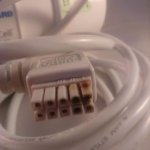I was looking at buying this used cell listed as Not working, For parts. It's my impression that this could be caused by a bad connection with the board, a wiring with the board, lightening, or bad connection in the cell (maybe?). If I know MY board is good, then maybe it was only an issue with the seller's equipment and I can just replace the cord with an older one. Is this possible? Any other thoughts?




